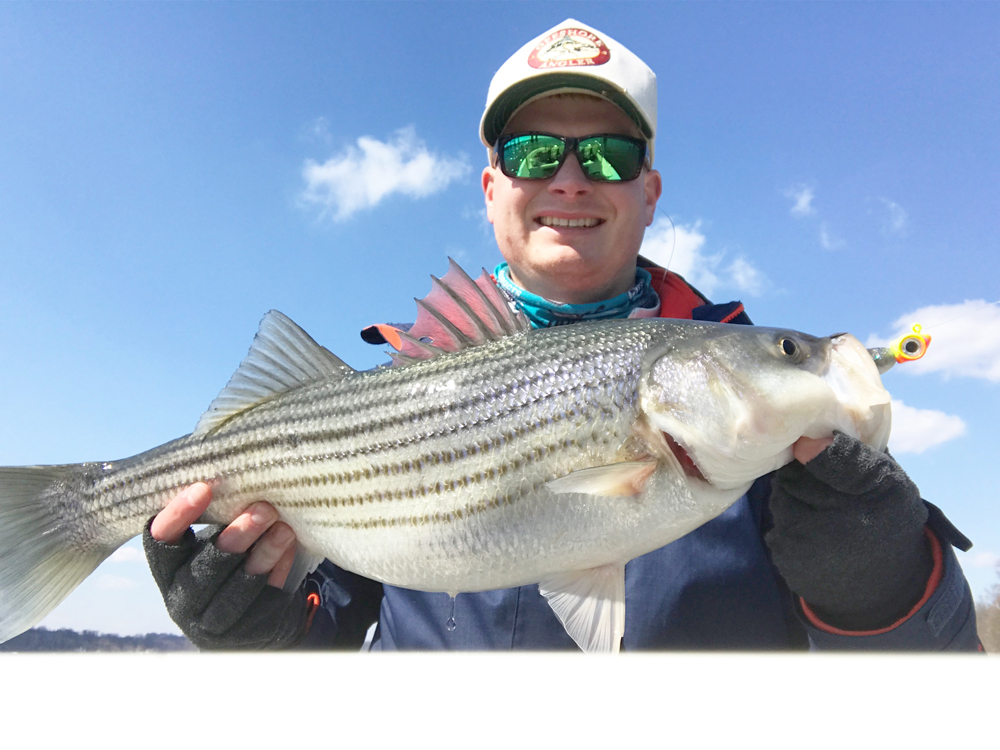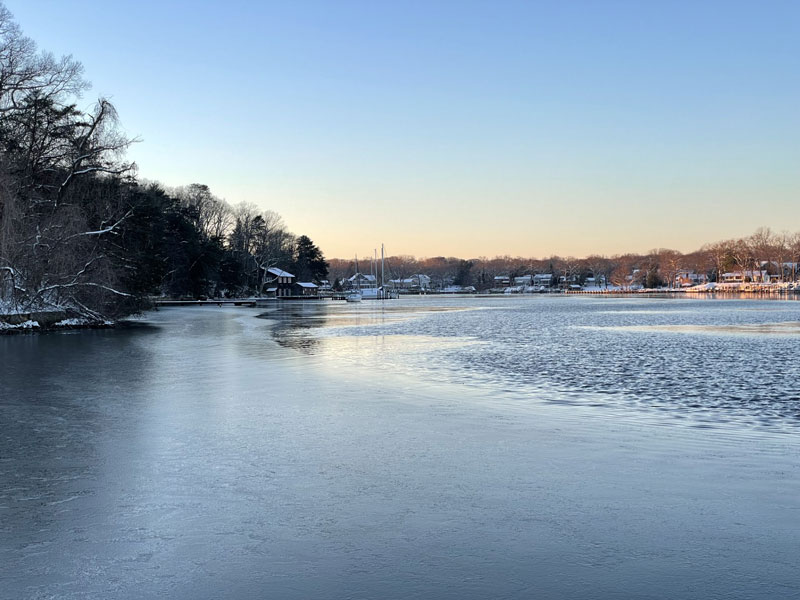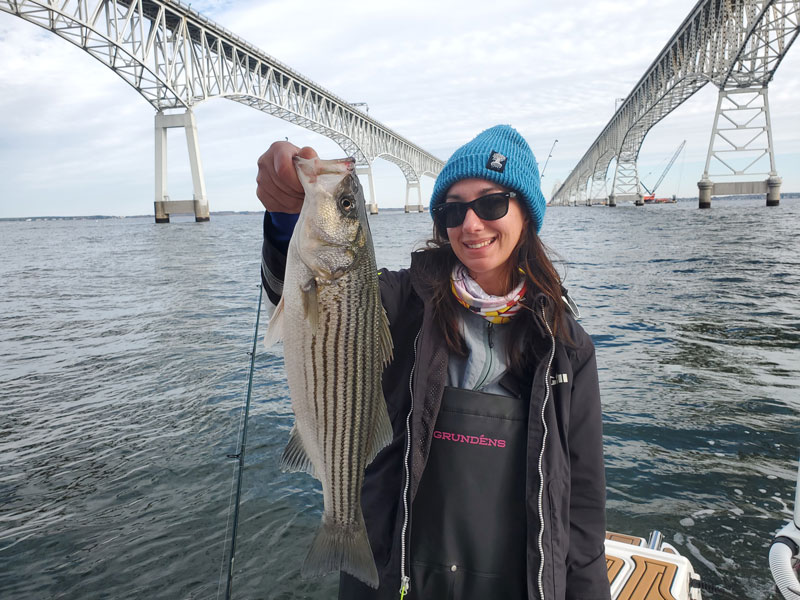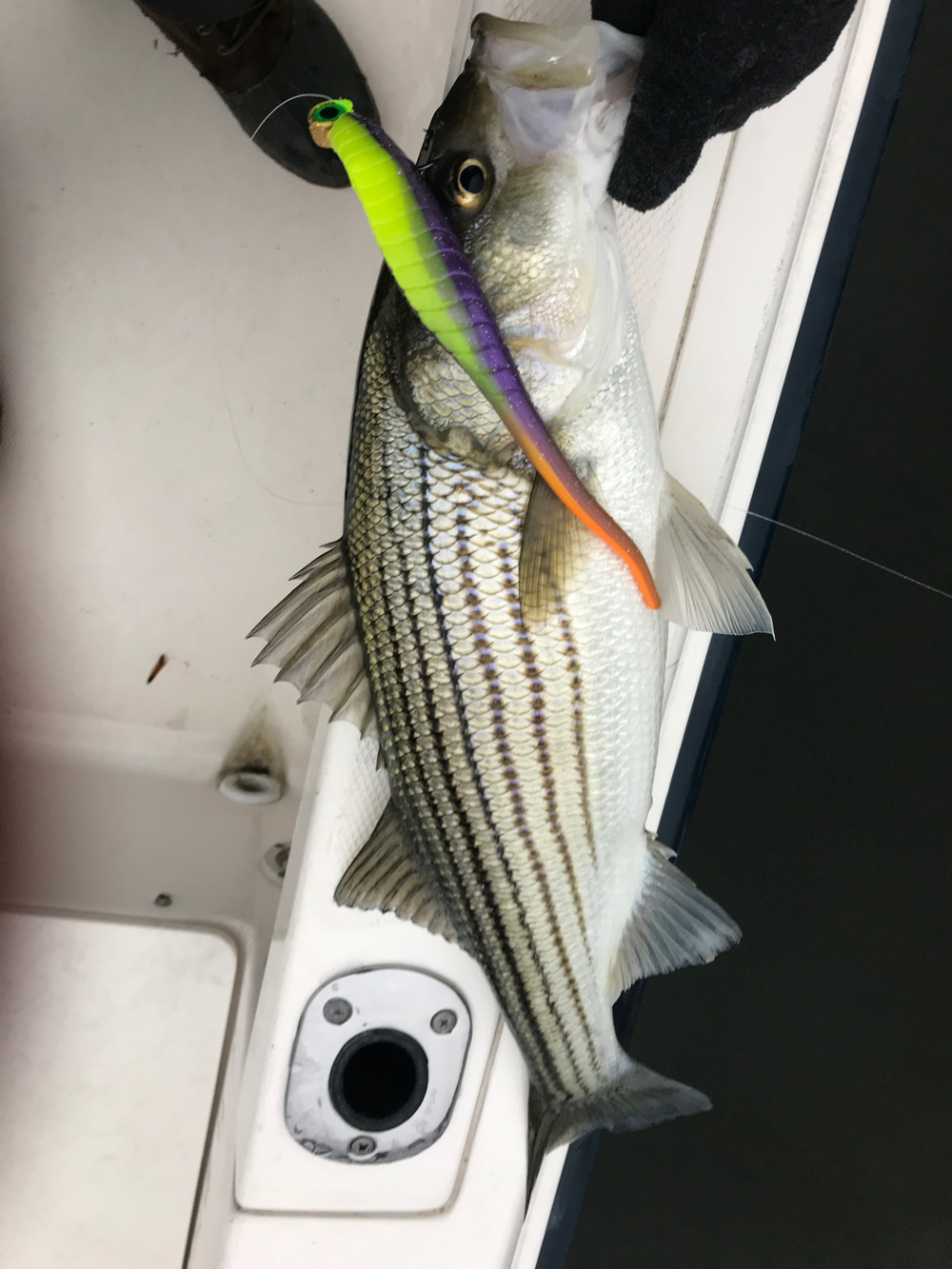When trophy striped bass invade the Chesapeake Bay the action can get hot and heavy. Once water temperatures drop below the 40-degree mark, however, that bite usually shuts down. But, don't give up hope! You can still catch and release rockfish when the weather cooperates. If you missed it, here's a link to Catch and Release Off Season Stripers Part I. Here in Part II, we'll look at how to target schoolie stripers in the tributaries long after the big fish bite has ended.

The second winter I owned my boat I decided not to store or winterize it for the season. I left it there on the lift, on the Severn River. This led to the discovery of a great and almost-untouched winter fishery. The last three winters I’ve been exploring the Severn and the Bay Bridge on any day with weather decent enough that I can get on the water. I’ve found a surprising number of schoolie rockfish in the tributaries during the winter and pre-season months that are more than willing to bite. Here are some observations that have helped add to the success of these trips:
When to Fish Tributaries in Winter
Warmer days are when I see the most action at the end of the rod. That being said, I’m usually not out on the water on the colder days or when it is blowing more than 12 knots. In the afternoon on a warmer day, the fish I chase are coming up into the shallows seeking the warmer water that has been heating up from the sun all day. When fishing in the shallows I also prefer a higher tide, as the fish seem to follow it in. Moving tidal water also helps when you’re scanning the bridge structure or oyster beds.

Through the winter and into late March and early April are great months to fish. (Important Editor's Note: when this article was written it was legal to target striped bass for catch and release in certain tributaries during this timeframe. Then targeting rockfish was made illegal in Maryland waterways through the month of April but was still allowed in March in some tribs.These regulations are constantly changing, so check the Maryland DNR Striped Bass Maps to see where and when it's allowed at any given time.) You’ll have access to the local fish that hung around all winter, and you may even get a shot at some migrating fish that are coming in early to spawn. I’ve found that during this time in the very early spring, I’m moving out of the shallows and more toward the bridge structures and the deeper parts of the river to find schools of fish.
Where to Fish During Winter Months
The three places I like to check out in the colder months are the shallows, local oyster beds, and bridge structure. First, a deep ledge that leads up into some shallows where one would generally try topwater fishing in the fall months is hard to beat. Circle over the ledge and see what’s on the fishfinder, and it’s not unusual to see big marks on any given day. Second, head to the oyster beds in your river, putt back and forth in zigzags, and utilize your fishfinder searching for marks. If you run across a school or something on bottom, toss your line out and jig it back to the boat. Try to work it in the column where you saw the marks as you normally would. Third, head to your local structure. In the Severn, I frequent the Naval Academy and Severn River Bridges. Cruise right along the backside of all the pilings at trolling speed waiting to see something pop up on the fishfinder screen. As soon as you see something, pull the throttle back and toss the line behind the boat and try to get the lure to the depth of the marks. This has resulted in multiple hookups over the last few years. And although this is specific to the Severn River, similar spots can be found in just about every Chesapeake tributary.
How to Fish During Winter
Approaching a ledge from deep to shallow, I’ll cut the engine and slowly drift up the ledge looking at the fish finder. Don’t get discouraged if you don’t see any marks approaching the shallows. Cast into around five feet of water with a one-ounce. weighted jig and work it back to the boat, bouncing the bottom. When the water gets deeper let out more line to keep it on the bottom. I’ve found that the fish are extremely sluggish, a very slow retrieve working best. If you get a tap, set the hook as fast as you can. It may not feel like a fish is on for the first couple of seconds, but this is the sluggish fish just awakening. They’ll come alive and start fighting as you bring them closer to the boat. I’ll usually do a drift over an area casting one lure to start, and then move on to the next lure. If I get no bites after 15 to 20 minutes, then I’ll move on to the next shallow water spot or on to some structure. Work the bridge pilings the same way you would in the regular season.

Tackle for Winter Stripers
A fast to extra-fast rod with 10- to 15-pound braid standing line, and a 20- to 30-pound fluorocarbon leader, is what you’ll want. So far as lures go, I’ve found that bigger skirted lures are much more effective in the winter months. Given the amount of energy rockfish are preserving in the winter, I believe that a larger lure entices them to bite. Darker colors have drawn the most strikes. My preference for this time of year is a Smokey Shad eight-inch Zman, an Avocado or Churple 10-inch BKD, or a Purple Glitter six-inch paddletail.
-By Kevin Thomas

Also be sure to check out our video on winter striper fishing at the warm water discharges, which can have a bite at any time through the winter:
Editor's note: This article was originally published in February of 2019 and was last updated in January of 2025.